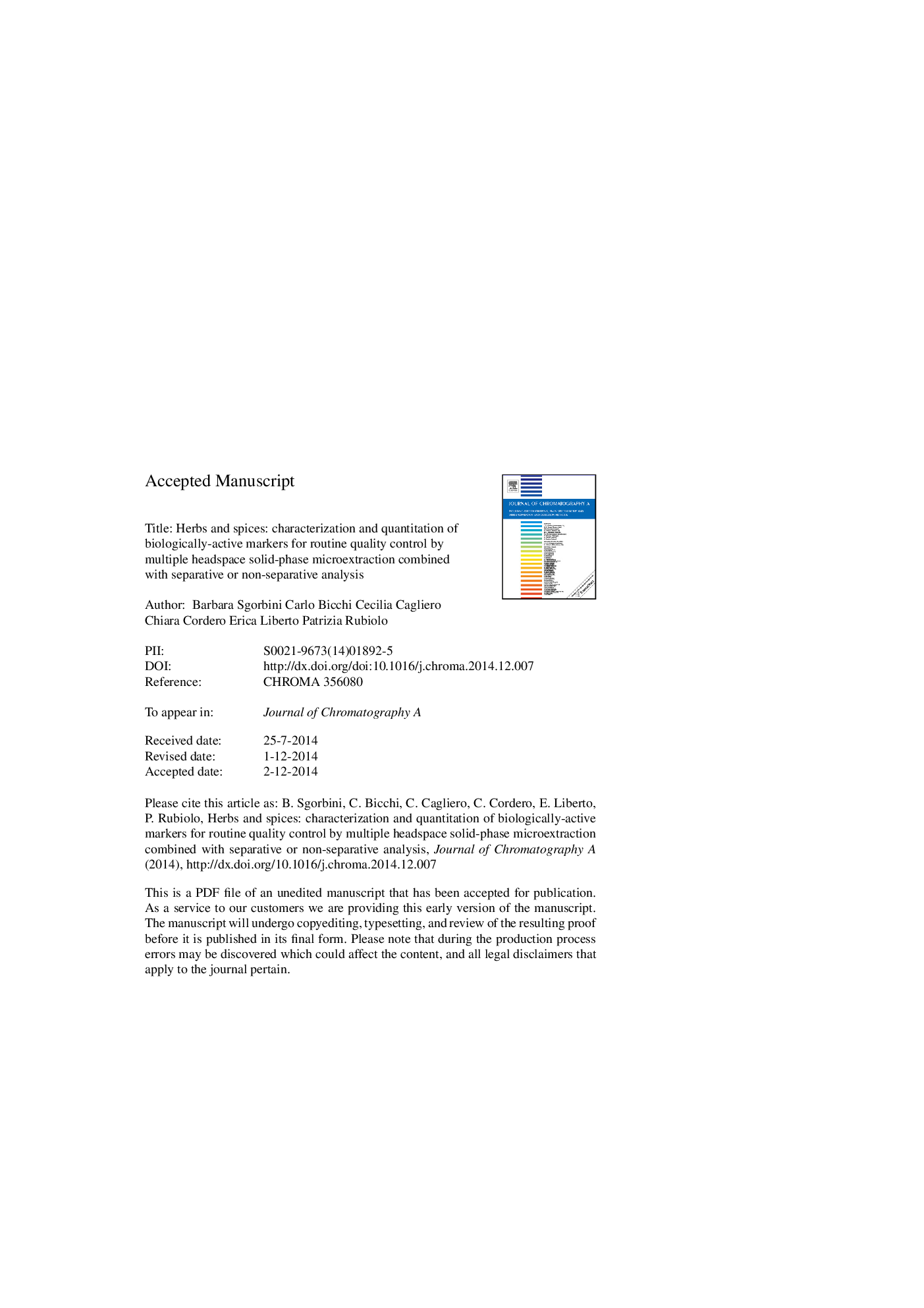| کد مقاله | کد نشریه | سال انتشار | مقاله انگلیسی | نسخه تمام متن |
|---|---|---|---|---|
| 7612098 | 1493550 | 2015 | 30 صفحه PDF | دانلود رایگان |
عنوان انگلیسی مقاله ISI
Herbs and spices: Characterization and quantitation of biologically-active markers for routine quality control by multiple headspace solid-phase microextraction combined with separative or non-separative analysis
ترجمه فارسی عنوان
گیاهان و ادویه جات ترشی جات: مشخص کردن و کم کردن نشانگرهای فعال زیستی برای کنترل کیفیت روزمره با استفاده از چند میکروکساکتیو فاز جامد چند فاز همراه با تجزیه و تحلیل جدایی ناپذیر
دانلود مقاله + سفارش ترجمه
دانلود مقاله ISI انگلیسی
رایگان برای ایرانیان
کلمات کلیدی
گیاهان، ادویه ها، اثر انگشت مقیاس مارکر، روش جداسازی (فشرده سازی چند فاز جامد فاز میکرو اکستراسیون گاز کروماتوگرافی اسپکترومتری جرم)، روش غیر جداسازی (طیف سنجی جرم چند منظوره جامد فاز جامد جامد)،
موضوعات مرتبط
مهندسی و علوم پایه
شیمی
شیمی آنالیزی یا شیمی تجزیه
چکیده انگلیسی
Herbs and spices are used worldwide as food flavoring, thus determination of their identity, origin, and quality is mandatory for safe human consumption. An analysis strategy based on separative (HS-SPME-GC-MS) and non-separative (HS-SPME-MS) approaches is proposed for the volatile fraction of herbs and spices, for quality control and to quantify the aromatic markers with a single analysis directly on the plant material as such. Eight-to-ten lots of each of the following herbs/spices were considered: cloves (Syzygium aromaticum (L.) Merr. & Perry), American peppertree (Schinus molle L.), black pepper and white pepper (Piper nigrum L.), rosemary (Rosmarinus officinalis L.), sage (Salvia officinalis L.) and thyme (Thymus vulgaris L.). Homogeneity, origin, and chemotypes of the investigated lots of each herb/spice were defined by fingerprinting, through statistical elaboration with principal component analysis (PCA). Characterizing aromatic markers were directly quantified on the solid matrix through multiple headspace extraction-HS-SPME (MHS-SPME). Reliable results were obtained with both separative and non-separative methods (where the latter were applicable); the two were in full agreement, RSD% ranging from 1.8 to 7.7% for eugenol in cloves, 2.2-18.4% for carvacrol + thymol in thyme, and 3.1-16.8% for thujones in sage.
ناشر
Database: Elsevier - ScienceDirect (ساینس دایرکت)
Journal: Journal of Chromatography A - Volume 1376, 9 January 2015, Pages 9-17
Journal: Journal of Chromatography A - Volume 1376, 9 January 2015, Pages 9-17
نویسندگان
Barbara Sgorbini, Carlo Bicchi, Cecilia Cagliero, Chiara Cordero, Erica Liberto, Patrizia Rubiolo,
